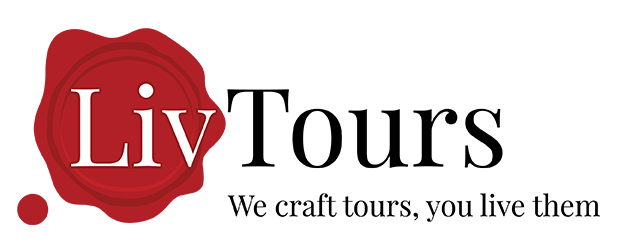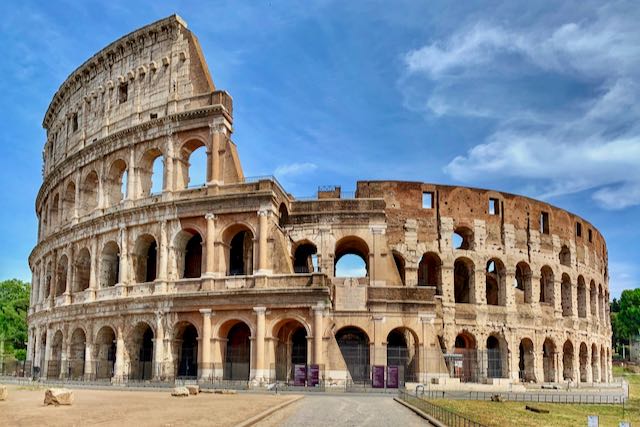- Sign up & get a FREE ebook Subscribe NOW!
- Romewise Home Page
- papal conclave
What Happens After The Pope Dies And What Is A Papal Conclave?
Are you planning to visit the Vatican City anytime soon? Wondering how the papacy works? If so, you might be interested to learn more about the Papal conclave and exactly how the Pope gets elected.
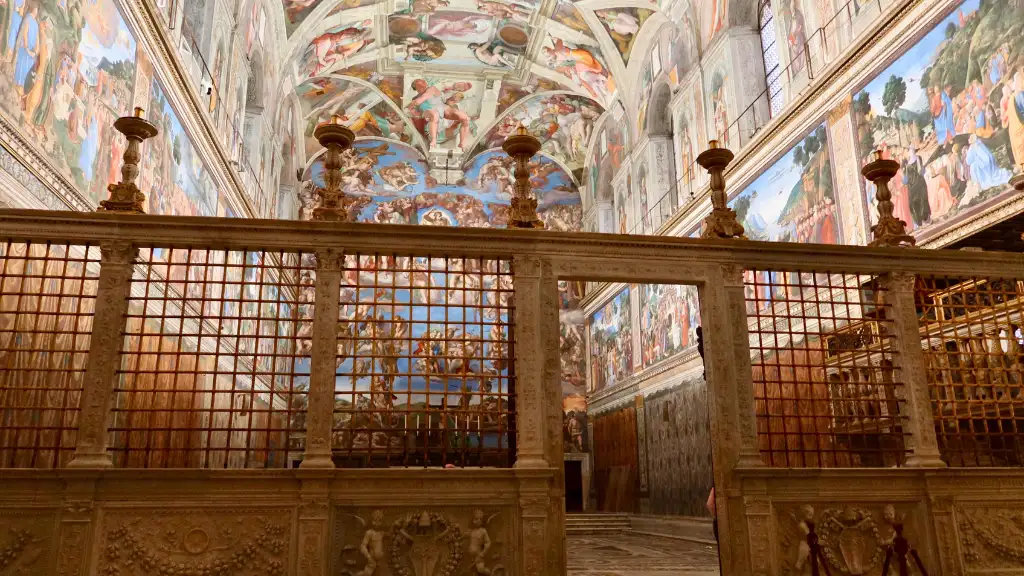 The Sistine Chapel is the home of the Papal Conclave, but why is this? Keep reading to discover the answer and much more
The Sistine Chapel is the home of the Papal Conclave, but why is this? Keep reading to discover the answer and much moreStick with me to find out exactly what happens during this mysterious election process.

Everything You Need to Know About How a New Pope is Chosen
Even if you’re not heavily involved in the Catholic Church, you’ve probably seen video clips of the pope right after his election. He’s standing on the central balcony above St. Peter’s Square greeting his subjects after being sworn into the papacy.
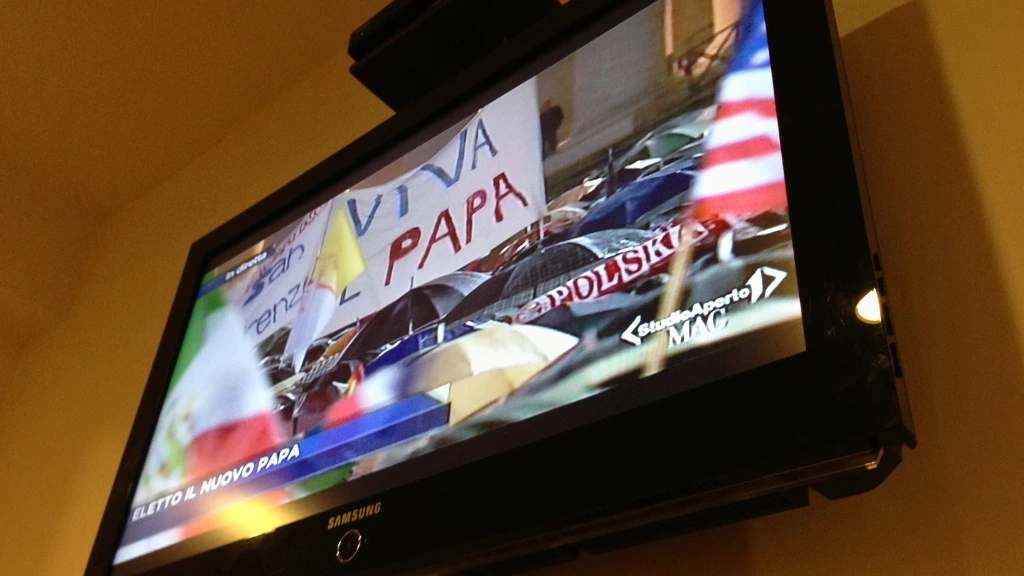 These were the scenes when Pope Francis was elected in 2013, with Rome filled with people excitedly awaiting their new pope
These were the scenes when Pope Francis was elected in 2013, with Rome filled with people excitedly awaiting their new popeBut exactly how are new popes chosen and what goes on behind closed doors?
And why is the papal election process held in the Sistine Chapel?
Well, I’m here to answer all your questions and fill you in on the centuries-old process behind electing a new pope.
On this page, we’ll be delving into:
- What is a Papal conclave?
- The history of the conclave
- Conclave and the Sistine Chapel
- What's the importance of the smoke?
- Can there be more than one Pope?
What happened after Pope Francis passed away?
On April 21 2025, Pope Francis sadly passed away.
There are some specific rules that are followed when a pope passes away. A nine-day mourning period starts following the official confirmation of the pope's death, and his funeral takes place between the fourth and sixth day.
The Vatican Museums and St Peter's Basilica will be closed to visitors at certain points during the mourning period.
After Pope Francis' funeral, his coffin was taken to the Basilica of Santa Maria Maggiore and laid to rest in a new tomb.
The Conclave to elect the new pope starts after the mourning period, 15-20 days after the pope's death. The Sistine Chapel closes before the Conclave starts so that preparations can be made, but the Vatican Museums otherwise remain open during Conclave.
Pope Leo XIV was elected on May 8 during the 2025 Conclave.
If you happen to be in Rome around the time of a change in pope, it is a very special time to be in Rome. Outside of the Vatican, no other sights will be affected, and there is a unique atmosphere in the city.
So, embrace the changes and remember that this unusual period is about remembering the Pope who has died and looking ahead to a new one as well.
What is a Papal Conclave?
After a pope’s death or resignation (also known as a papal vacancy), the operation and governance over the Catholic Church passes over to the College of Cardinals.
These cardinals are from across the globe who have been personally chosen to represent the pope around the world. They are responsible for choosing the pope and are headed up by the Cardinal Camerlengo who supervises the entire election process.
Just so you’re aware, the only major requirement for a new pope is that he needs to be a baptized male. However, the pope is usually a high-level member from the clergy.
What Does the Process Look Like?
Once the conclave begins, the cardinals are strictly forbidden from making any communication with the outside world. Instead, they stay in a suite at the Vatican and take an oath of perpetual secrecy that keeps any discussions and actions at the conclave secret.
The only exception to this rule is two doctors and priests who are able to attend to the cardinals and hear confessions.
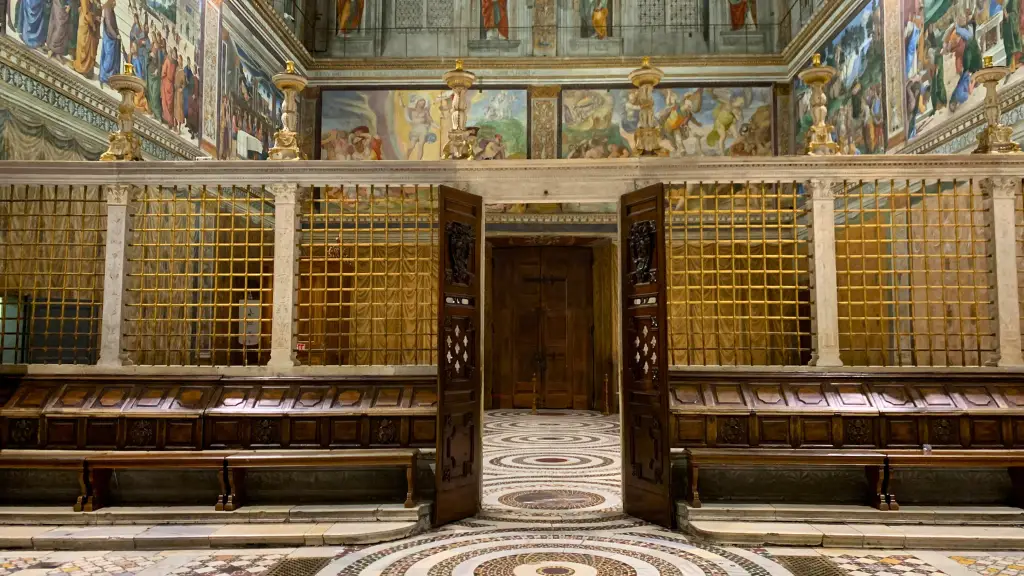 The Sistine Chapel is where the conclave and voting process takes place whenever a new pope is needed
The Sistine Chapel is where the conclave and voting process takes place whenever a new pope is neededIn terms of the election process itself, it runs in ballot form after a Mass in the morning.
The cardinals write their vote on a slip of paper (with disguised handwriting) and place their ballots in a dedicated urn. Before being counted, three cardinals will mix, count, and assess all the ballots. One of them is responsible for passing a needle and thread through any counted votes.
One ballot is held among the College of Cardinals on the first day of the papal election, with four ballots held the next day (two in the morning and two in the afternoon).
The process continues until a candidate receives at least two thirds of the vote among the cardinals. If the voting is still inconclusive after twelve days, a simple majority measure is used.
During this period, there might be pauses for prayer and a spiritual “exhortation” by a senior cardinal to get the cardinals back on track.
No matter what season you visit Rome, here are 4 essential things we recommend never leaving home without:
What Happens Once the Pope is Elected?
Once the pope has been elected, the senior cardinal deacon would announce 'Annuntio vobis gaudium magnum: habemus papam’. This essentially means 'we announce with great joy, we have a new Pope' and signals the start of the new Pope’s reign.
The new pope will be asked whether he accepts his canonical election and new position as the Supreme Pontiff. If he accepts, the newly elected pope will appear in pontifical robes and offer his blessings from a central balcony overlooking St. Peter’s Square.
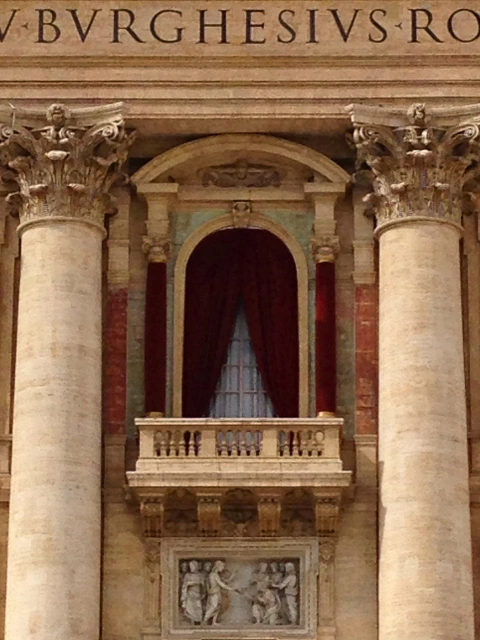 This balcony is the one from which every pope gives his first address to the crowds of people waiting in the square below
This balcony is the one from which every pope gives his first address to the crowds of people waiting in the square belowThe papal tailors usually prepare these in multiple sizes and will include everything from a white cassock and silk sash to a skullcap and red velvet mozzetta.
While an elected pope can technically turn down the position, this virtually never happens (as it’s turning down a divine anointment from the Holy Spirit).
Want to learn more about the Vatican?
Join this complete tour on which you will discover the wonders of the Vatican Museums and Sistine Chapel before seeing St Peter's Basilica - not to be missed.
The History of the Conclave
Early papal elections were generally decided by the clergy and the people of Rome, but there was also considerable influence from the local noble ruling families.
By the 10th century, external influences and corruption meant that the Church needed to seclude the cardinals during the voting process.
In 1059, Pope Nicholas II put a decree in place that limited the role of external people and put the voting in the hands of cardinal bishops. The conclave system continued this way until it was formalized and regulated by papal bulls (official decrees issued by popes).
The most famous papal bull was released by Pope Gregory X in 1274 and officially established the conclave system as standard for electing the new pope.
This process is where the term “conclave” originated from, as it derives from the Latin word “cum clave” (with a key). This referred to how the cardinals were locked away during the vote.
After this, it was initially only cardinal bishops and cardinal priests that were involved in the election process. However, Pope Boniface VIII expanded this to include cardinal deacons.
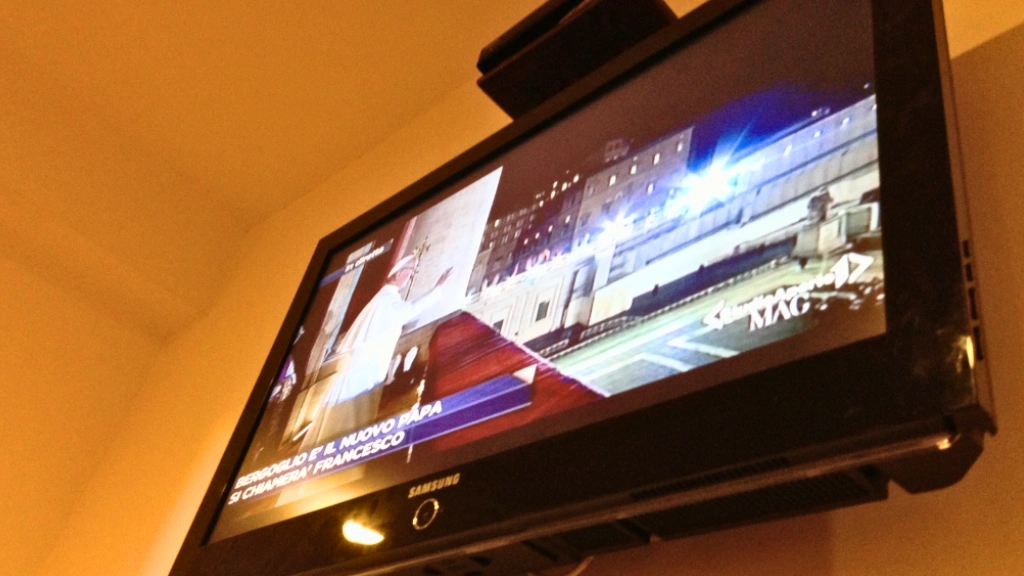 While nowadays every step of the Papal conclave is followed by TV crews all over the world (here is Pope Francis on the night of his election in 2013), originally it was far more private
While nowadays every step of the Papal conclave is followed by TV crews all over the world (here is Pope Francis on the night of his election in 2013), originally it was far more privateThe process was relatively smooth until the fourteenth century when rival popes were elected in the Western Schism in 1378; one resided in Avignon and the other in Rome.
This split the Church for almost 40 years as several popes vied for supremacy.
There was still some interference in papal elections from Catholic kings in Europe. This happened in 1721, 1730, 1758, 1830, and 1903 and gave royalty the power to essentially veto papal candidates. This was abolished by Pius X in the early 20th century.
If we rewind a touch, in 1179 under the Third Lateran Council, a two thirds majority was required to decide the election. In 2007, Pope Benedict XVI added to this by issuing a motu proprio that required a two thirds majority regardless of the number of ballots needed to elect a new pope.
These days, only cardinals under the age of 80 are eligible to vote to elect a new pope (known as cardinal electors). This rule was added in 1970 by Paul VI and was followed by a 1975 rule that limited the number of cardinal electors to 120.
Conclave and the Sistine Chapel
In the very early centuries of Christianity, papal elections were usually conducted in palaces or churches throughout Rome. They were often affected by external influences and were sometimes relatively informal (hence the introduction of the papal seclusion!).
The formalization of the conclave brought the process to the Sistine Chapel, the Papal Chapel in the Vatican Palace that was also large enough to host the enormous College of Cardinals.
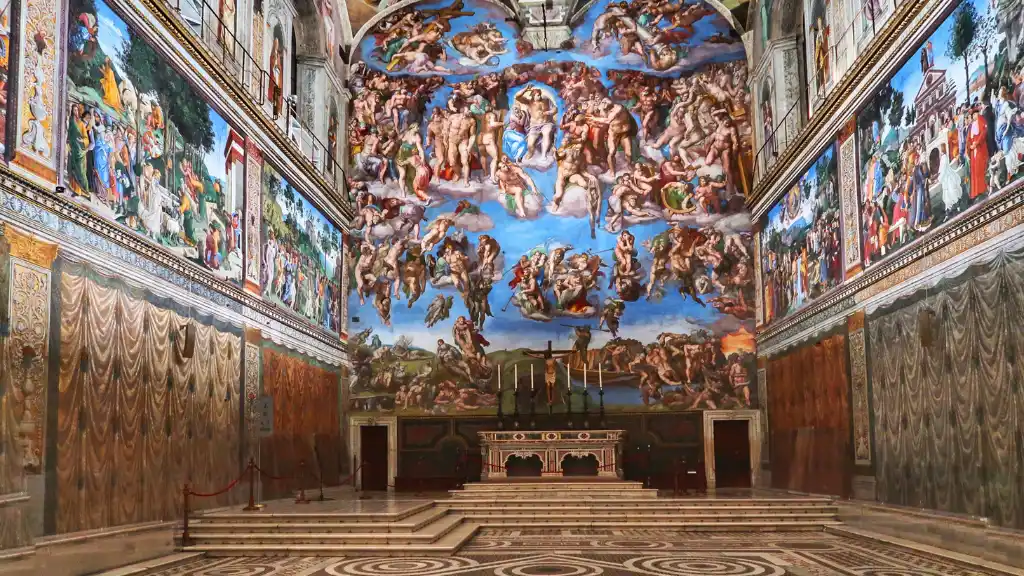 During the conclave Michelangelo's masterpiece, The Last Judgement, frames the voting and discussions
During the conclave Michelangelo's masterpiece, The Last Judgement, frames the voting and discussionsThe first papal conclave held in the Sistine Chapel was in 1492 and the process ran from August 6 to August 11. This led to the election of Pope Alexander VI.
Although it might come as a surprise, the Sistine Chapel still wasn’t the permanent home of the conclave at this stage.
After 1492, conclaves were held in the Vatican Palace and the Dominican Convent of Santa Maria Sopra Minerva.
However, the papal conclave between February 18-20 1848 (when Leo XII was elected) marked the permanent movement of the process to the Sistine Chapel.
One of the most special ways to see the Sistine Chapel is to join the exclusive Key Master tour that allows you to open up the rooms with no other visitors around.
This tour will give you a much better idea of what it's like during a conclave than a regular visit.
What Happens These Days?
Before the conclave starts and all the cardinals arrive, the Sistine Chapel is swept for hidden cameras or bugging devices.
And to make sure nothing untoward happens during the conclave, anti-bugging devices are used.
The floor is also raised temporarily to protect the gorgeous flooring underneath.
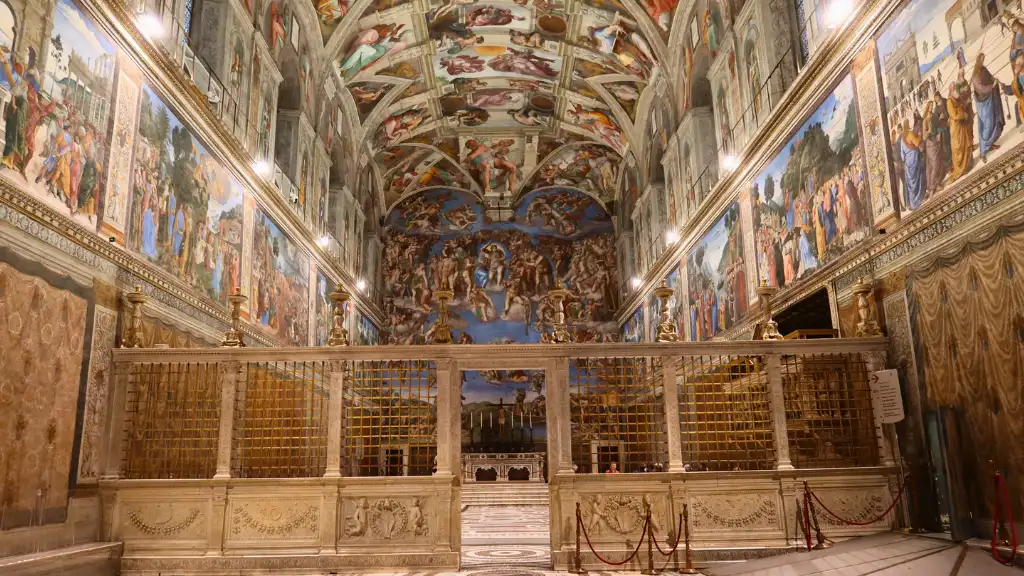 Lots of safety measures are put in place during the Papal conclave to prevent interference and to keep the cardinals safe
Lots of safety measures are put in place during the Papal conclave to prevent interference and to keep the cardinals safeBefore 2005, cardinals were housed in makeshift cells with chamber pots and hard beds to maintain secrecy. Luckily for them, Pope John Paul II changed this rule by constructing a five-storey guesthouse called Domus Sanctae Marthae.
So, the voting cardinals are no longer forced to stay strictly in the conclave area throughout the process.
If you’re visiting Rome during the papal elections, the Sistine Chapel will be well and truly off-limits. It’s closed for the days before the conclave starts, for the duration, and a few days afterwards.
Want to delve deeper into the history of the Papacy and learn more about some of the most fascinating popes?
This book takes a look at how the Papacy has evolved from the early days of Christianity to modern day, a great read for anyone interested in the history of the Vatican!
Disclosure: If you make a purchase through a link on this page, I may receive a small commission - at no extra cost to you. Thank you for supporting my site!
What's With the Smoke?
The secret ballot process is kept under wraps, but there is a visual representation of the vote taking place as the ballot papers are burned after each round of voting.
A temporary chimney is set up in the Sistine Chapel’s roof to signal decisions to the faithful waiting outside St Peter's Basilica below.
Chemicals are added to the fire, with black smoke signalling a failed vote and white smoke signalling the election of a new pope. The Vatican press office has stated that the black smoke is made from a mixture of potassium perchlorate, anthracene and sulfur.
The white smoke is a combination of potassium chlorate, lactose, and pine resin! Because the white smoke still looks a touch murky against the blue sky, a successful election from the ballot papers is also accompanied by chiming bells.
Ready to plan your trip?
Book your train
Planning to travel between cities in Italy and other parts of Europe?
Use Trainline to see all the different options available across the different rail companies.
Find your hotel
Find your perfect place to stay in Rome.
Use Booking.com to choose between hotels, guesthouses, and self-catering apartments in neighborhoods throughout the Eternal City.
Buy your TurboPass
Purchase the convenient Turbopass and visit all of Rome's top attractions including the Colosseum, Pantheon, and Vatican.
With one handy pass, it's all included.
Can There be More Than One Pope?
In the past, there have technically been different popes in the same calendar year. For example, 1276 was a year of an impressive four popes.
Another famous instance of multiple popes happened when Urban V and Clement VII were popes at the same time but in different parts of the country. This occurred under the infamous Western Schism we mentioned earlier.
But in reality, there can never be more than one active pope at once.
The number of popes being slightly higher in a single year occurs when a pope dies unexpectedly or resigns early in his papacy. According to the official law of the Church, a man ceases to be pope when he dies or abdicates his office.
So, you simply cannot have two popes at the same time.
The first pope in centuries to relinquish office was Pope Benedict XVI on 28 February 2013.
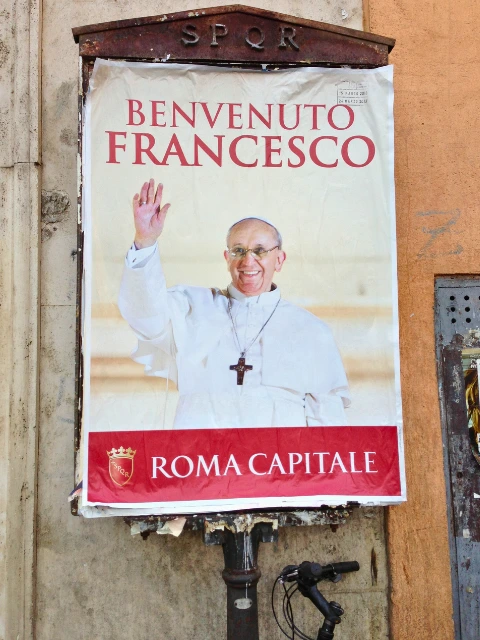 Pope Francis was elected after Pope Benedict retired from office in 2013 - these posters appeared all over Rome the day after he was elected
Pope Francis was elected after Pope Benedict retired from office in 2013 - these posters appeared all over Rome the day after he was electedHe was given the title “Pope Emeritus”, a title given to male retirees who will retain the title of their last role until their death (in this case, pope).
Benedict passed away in December 2022, and as Pope Francis sadly died in office in 2025, the chances of there being two living popes at the same time again are very slim.
Romewise's Top Travel Resources
Ready to book your trip to Rome? Take a look at these helpful links to companies we use and trust:
- Keep your travel spending simple with the Wise card, which removes all the worry about exchange rates and high transaction fees all over the world
- Search for and book your perfect accommodation
- Our complete guide to what to pack for Rome
- The number one travel accessory, a multi-point travel adapter and voltage converter
- Browse a huge range of tours in Rome and beyond
- Experience unique tours and special access to Rome's most popular sights
- Protect yourself with comprehensive travel insurance
Within this post there are some affiliate links for products and services. For more details about our affiliate policy click here.
Get your 100% free Rome trip planner now!
Simply sign-up today for our free newsletter and get the Romewise Quick Start guide to Rome:
We are committed to respecting your data. Click for our Privacy Policy.
Comments? Questions? Suggestions?
Please come over to the private Romewise Facebook group and join in the conversation.
You will often find me there, happy to answer your questions / comments!
You will also meet other Rome lovers and experts, too.
What are you waiting for?
- Romewise Home Page
- papal conclave






